Great Mid-Century Designers 101: Hans Olsen
In the world of Danish mid-century design, Hans Olsen does not have the same profile as his contemporaries Hans Wegner, Arne Jacobsen, and Borge Mogensen, but his work is becoming increasingly valued in today’s collectors’ market. Something of an outlier in his day, Olsen was known for experimenting with form to achieve optimal function, and creating unique, futuristic designs using a wide range of materials. He is recognized most for his work with bent wood and the “swooping organic curves” that formed the basis of many of his most famous pieces. (Artnet)
Hans Olsen: Outside the Mainstream
Hans Olsen was born in Denmark in 1919. He began his career as a cabinetmaker. At the age of 30, he enrolled at the Royal Danish Academy of Fine Art where he studied under design master Kaare Klint.
At the Academy, Olsen focused on ergonomics and the study of human body measurements (anthropometry). His studies were a sign of things to come. In his career he would show an affinity for experimenting with shape and materials, all with the goal of achieving “maximum comfort.” (Pamono)
With his more “playful and experimental approach,” Olsen stood outside the mainstream Klint school. (WarmNordic) In 1953, he opened his own studio and began exhibiting his works with the Cabinetmakers Guild in Copenhagen “to much acclaim.” (Artnet) The resulting interest in his designs led to partnerships with leading Danish manufacturers like Bramin Møbel, Frem Røjle, and N.A. Jørgensen.(Pamono) Looking at his early work, it is easy to see what made his pieces so popular: efficient, economic design; flawless construction; a wide range of textures and materials; and compelling, organic shapes that drew the eye.
One of his first creations was the Roundette dining set, an ingenious design that was both elegant and practical. Triangular seats fit neatly together, and the chair backs nestle seamlessly under the table top:
Hans Olsen Roundette Dining Set. Image from 1stdibs.
In addition to innovations in shape, Olsen did not shy away from trying unconventional materials, like bent, laminated wood. Olsen’s early chair designs showcase his use of bent wood, along with the exaggerated curves he was known for. The Model 134--also known as the “Orange chair” for its resemblance to an orange peel--was first made in the 1950s. Its seat and backrest were each made of a single piece of molded wood:
Hans Olsen Model 134 Orange chair. Image from Sharp Lines Old Times.
Similarly, the Model 107, made in 1957, also used a single piece of wood for its back and armrests:
Hans Olsen Model 107 armchair. Image from Archive Furniture.
Perhaps Olsen’s most famous bent wood chair is the Bikini. Designed later in his career, in 1968, it was recognized for its “futuristic lines and confident attitude” and considered a “radical piece for its time.” (Sharp Lines Old Times)
Hans Olsen Bikini chair. Images from ArtNet.
Olsen’s bent wood designs hint at the playfulness for which he was known. That trait appeared in other furnishings as well, including the widely recognized Model 188, better known as the “Fried Egg.”
Hans Olsen Fried Egg Chair. Image from Artnet.
The chair’s nickname comes from the top-down view, in which it looks like a fried egg:
Hans Olsen Fried Egg chair, seen from above. Image from Sharp Lines Old Times.
An article on ArchiProducts discusses the impact of the chair:
The Fried Egg chair stands out with its playful idiom, which in its very own way captures the zeitgeist of the 1950s, when experiments, bravery and skill resulted in world-class furniture. Hans Olsen had an exceptional awareness of line, surface and colour. In his designs, he was not afraid to combine classic values with humour, and Fried Egg aroused well-deserved attention when it was presented at the Cabinetmakers’ Guild Furniture Exhibition in Copenhagen in 1956.
Olsen’s innovations with form and materials are evident in two other well-known designs: his King Frederik VII chair and TV bench.
The King Frederik VII chair included a drop-leaf shelf attached at the back. It was inspired by its namesake king, who, it is said, preferred to sit backwards when reading and commissioned a chair that would allow him to do so. The Olsen version was “flexible enough to sit in either forwards, backwards or sideways.” Multiple chairs could also be positioned together around a larger table surface for playing cards or eating. In 1965, the chair won a gold medal from the American Institute of Interior Designers. (Mostly Danish Modern, Sharp Lines Old Times)
Hans Olsen King Frederik VII chair. Image from Mostly Danish Modern.
Ad for Olsen’s King Frederik VII chair. Image from Mostly Danish Modern.
Olsen’s TV bench combined a highly practical design with a novel use of materials. It was completely modular: all of the pieces could be separated and configured in a variety of ways, as shown below. It was also visually striking, with its intricate canework and open, minimalist design.
Hans Olsen TV bench. Images from Sharp Lines Old Times.
The angle of the backrests is also notable. With his knowledge of ergonomics and the human form, Olsen designed the seats in his TV bench to fit the body perfectly, ensuring total comfort. A similar angle is seen in the backrest of his rocking chair, which also featured beautiful canework and an open, airy design. Despite the lightness of its appearance, the rocking chair is remarkably sturdy, owing to its spring seat and solid construction:
Hans Olsen rocking chair. From VHB’s collection.
Olsen applied the same ergonomic principles to his more conventional upholstered furniture. In these pieces, the angle of the backrest and depth of the seat combine to envelop the body perfectly:
Hans Olsen lounge chairs. From VHB’s collection.
Hans Olsen 4-seater sofa. From VHB’s collection.
Ergonomics also factored into another of Olsen’s famous chairs. In his highly collectible Safari chair, he crafted a backrest and seat from a single piece of leather. This “sling” style of seat curves around the body for incredible comfort. He added leather armrests to complete the look:
Hans Olsen Safari chair with new leather. Image from VHB’s collection.
Hans Olsen passed away in 1992. With the permission of Olsen’s family, European furniture manufacturer Warm Nordic has pledged to “uphold [his] design legacy” with reissues of his more famous pieces, including the Fried Egg, “Gesture” chair (Model 107), and the “Orange” chair (Model 134). (Warm Nordic) These reproductions are a testament to the scarcity of the originals and increasing demand for Olsen’s unique and intriguing designs.




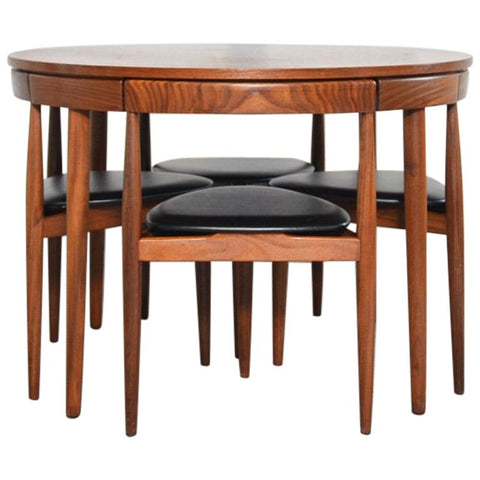
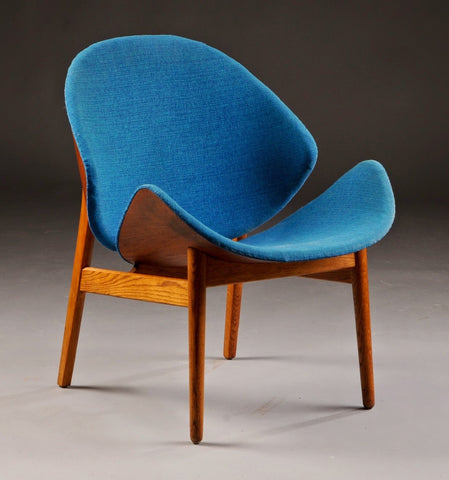


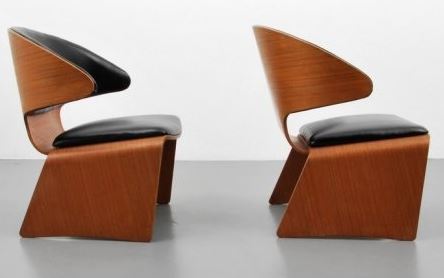

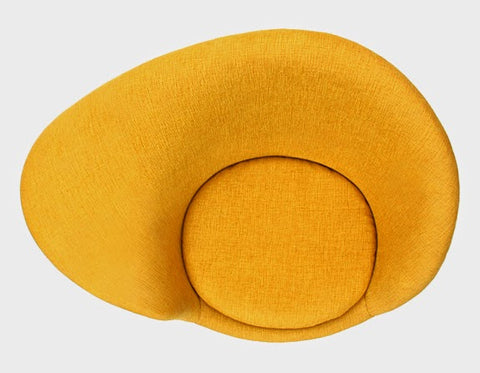
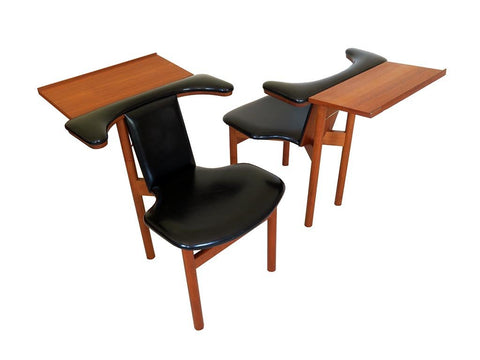
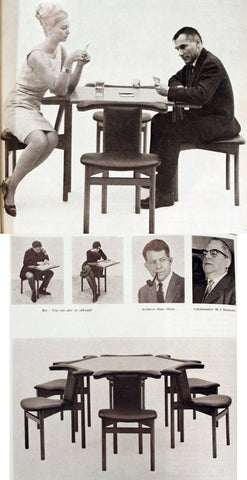






Leave a comment